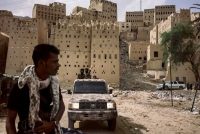
Mozambique’s Insurgency Requires a Multi-Pronged Response
A violent insurgency in Mozambique’s northernmost province of Cabo Delgado is sparking fears that the area could become the next frontier for global jihadism in Africa. In recent years, young men, sometimes carrying the black flag of the Islamic State, have swept hundreds of thousands of people off their land in the natural gas-rich province. The militants’ attacks have often been marked by beheadings and mutilations, including of children.
All told, more than 3,000 people have been killed in the violence. Mozambican security forces have struggled to contain the insurgents, who in late March stormed the northern town of Palma, the gateway to multibillion-dollar natural gas projects that were being constructed with the investment of major multinational oil firms like France’s Total.… Seguir leyendo »












